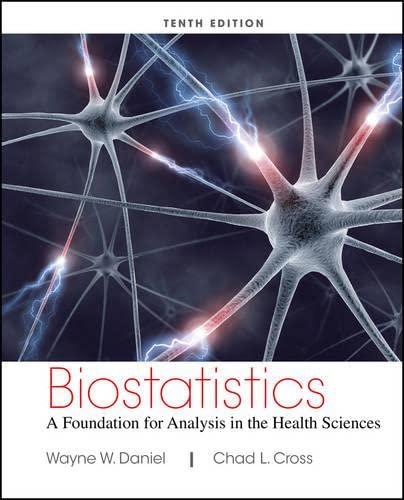Researchers at a trauma center wished to develop a program to help brain-damaged trauma victims regain an
Question:
Researchers at a trauma center wished to develop a program to help brain-damaged trauma victims regain an acceptable level of independence. An experiment involving 72 subjects with the same degree of brain damage was conducted. The objective was to compare different combinations of psychiatric treatment and physical therapy. Each subject was assigned to one of 24 different combinations of four types of psychiatric treatment and six physical therapy programs. There were three subjects in each combination. The response variable is the number of months elapsing between initiation of therapy and time at which the patient was able to function independently. The results were as follows:
Physical Psychiatric Treatment Therapy Program ABCD 11.0 9.4 12.5 13.2 I 9.6 9.6 11.5 13.2 10.8 9.6 10.5 13.5 10.5 10.8 10.5 15.0 II 11.5 10.5 11.8 14.6 12.0 10.5 11.5 14.0 12.0 11.5 11.8 12.8 III 11.5 11.5 11.8 13.7 11.8 12.3 12.3 13.1 11.5 9.4 13.7 14.0 IV 11.8 9.1 13.5 15.0 10.5 10.8 12.5 14.0 11.0 11.2 14.4 13.0 V 11.2 11.8 14.2 14.2 10.0 10.2 13.5 13.7 11.2 10.8 11.5 11.8 VI 10.8 11.5 10.2 12.8 11.8 10.2 11.5 12.0 Can one conclude on the basis of these data that the different psychiatric treatment programs have different effects? Can one conclude that the physical therapy programs differ in effectiveness? Can one conclude that there is interaction between psychiatric treatment programs and physical therapy programs? Let a ¼ :05 for each test.
Exercises 8.5.3 and 8.5.4 are optional since they have unequal cell sizes. It is recommended that the data for these be analyzed using SAS® or some other software package that will accept unequal cell sizes.
Step by Step Answer:

Biostatistics A Foundation For Analysis In The Health Sciences
ISBN: 9781118302798
10th Edition
Authors: Wayne W. Daniel, Chad L. Cross






